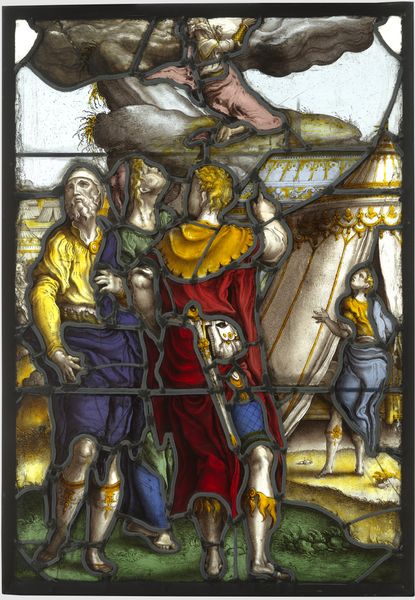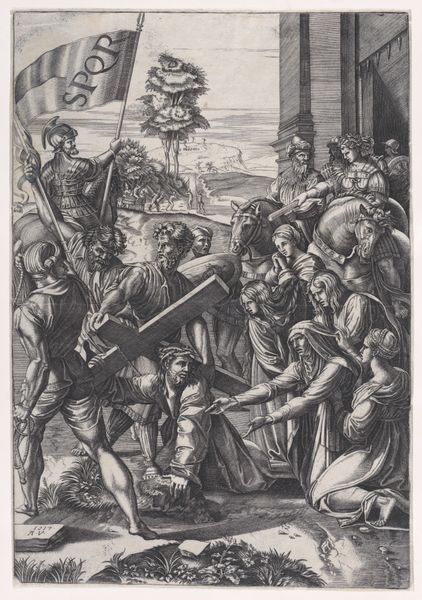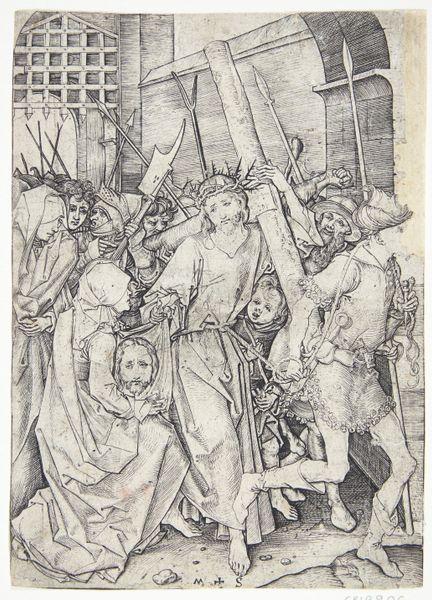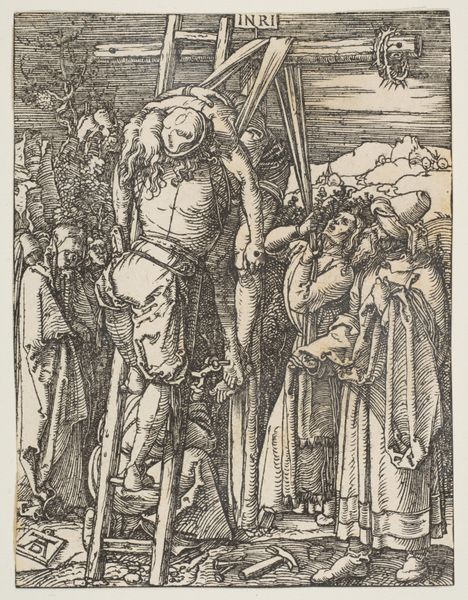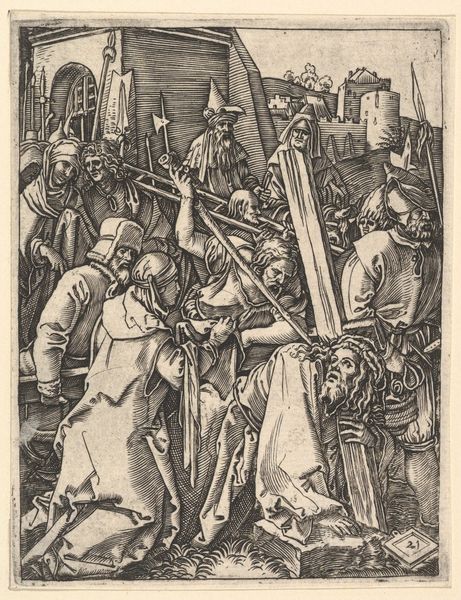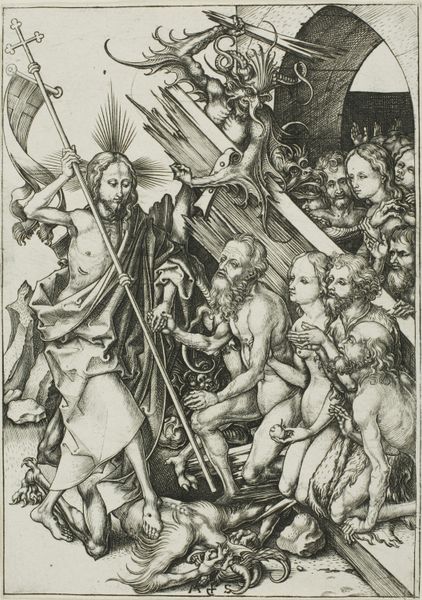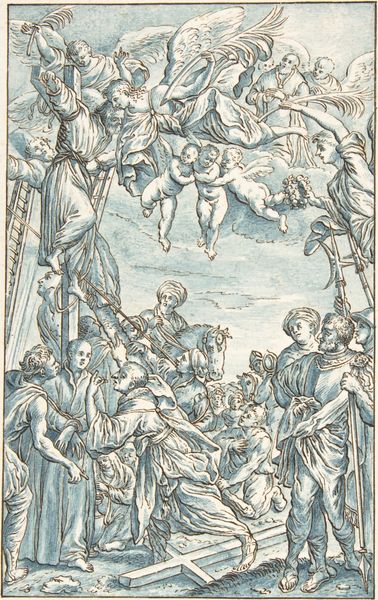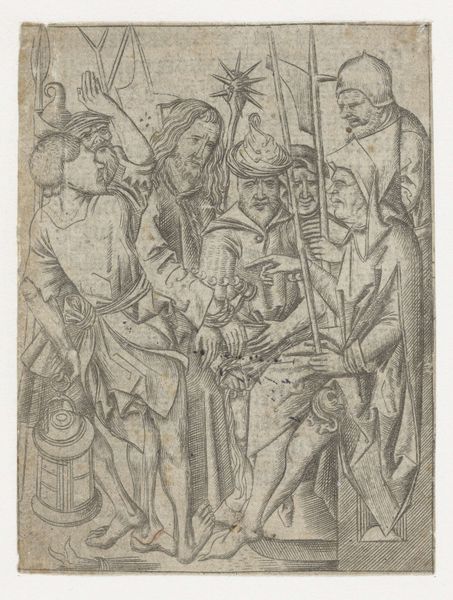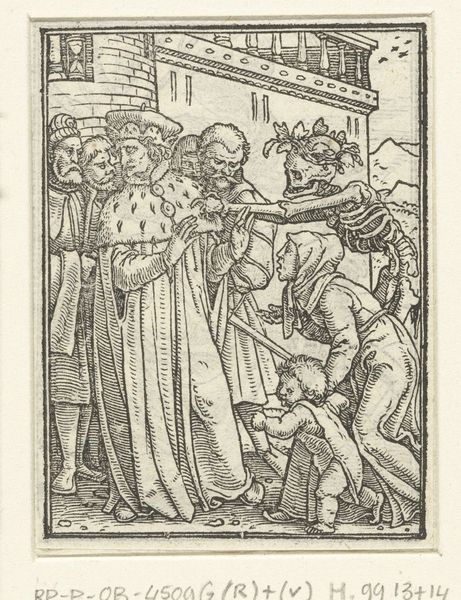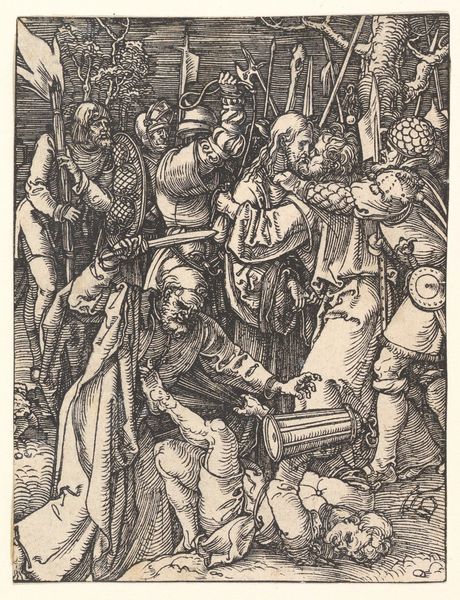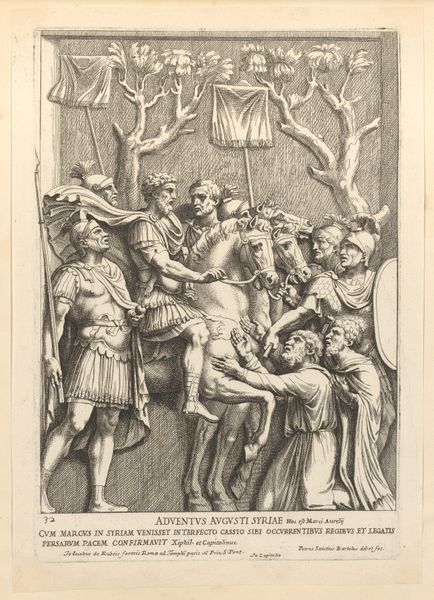
glass, sculpture
#
medieval
#
narrative-art
#
figuration
#
glass
#
sculpture
#
men
#
history-painting
#
northern-renaissance
#
decorative-art
Dimensions: Overall: 27 1/4 × 18 1/2 in. (69f.2 × 47 cm)
Copyright: Public Domain
Editor: This stained-glass panel from the early 16th century by Jan Rombouts depicts “Joseph Being Stripped of His Cloak.” The bright colors and dramatic figures are quite striking. I’m wondering, with your art historical background, what jumps out to you about this piece? Curator: Immediately, the choice of stained glass for this narrative strikes me. Consider where and for whom this panel might have been displayed. Stained glass, of course, wasn’t cheap. Its placement in a wealthy home, perhaps, visually reinforced religious or moral narratives, domesticating Biblical stories and aligning the owners with values of piety and social order. Editor: So it's about displaying social standing, not just devotion? Curator: Exactly. And the very act of depicting Joseph being stripped can be seen as commenting on justice, betrayal, and ultimately, divine providence. Rombouts chooses a key moment – a visible degradation– which is also deeply political in its resonance. Editor: Interesting. I was also drawn to the setting – the detail of the sheep in the background feels a little out of sync with the central drama. Curator: Indeed. That incongruity might reflect artistic conventions of the time. Think about the purpose of this artwork. This wasn't just a pretty scene; it's an exemplar of religious narrative for the community. The rural setting locates the narrative within a relatable context. Do you think that aspect would give some influence and understanding for it to other people? Editor: It gives it broader relatability. So understanding the culture of that time, and where the piece would have been displayed helps contextualize the image and it’s purpose beyond just the artwork. Curator: Precisely. We see here a beautiful object meant to carry quite a bit of cultural weight. It’s also quite striking how these panels become not just records but active players in shaping our understandings of social expectations. Editor: I see the picture, both literally and figuratively!
Comments
No comments
Be the first to comment and join the conversation on the ultimate creative platform.
